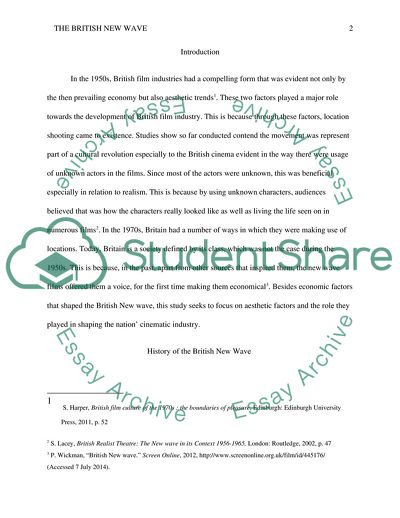Cite this document
(The British New Wave Coursework Example | Topics and Well Written Essays - 4000 words, n.d.)
The British New Wave Coursework Example | Topics and Well Written Essays - 4000 words. https://studentshare.org/visual-arts-film-studies/1833552-discuss-some-of-the-factors-which-shaped-the-british-new-wave-consider-economic-as-well-as-aestheticstylistic-factors
The British New Wave Coursework Example | Topics and Well Written Essays - 4000 words. https://studentshare.org/visual-arts-film-studies/1833552-discuss-some-of-the-factors-which-shaped-the-british-new-wave-consider-economic-as-well-as-aestheticstylistic-factors
(The British New Wave Coursework Example | Topics and Well Written Essays - 4000 Words)
The British New Wave Coursework Example | Topics and Well Written Essays - 4000 Words. https://studentshare.org/visual-arts-film-studies/1833552-discuss-some-of-the-factors-which-shaped-the-british-new-wave-consider-economic-as-well-as-aestheticstylistic-factors.
The British New Wave Coursework Example | Topics and Well Written Essays - 4000 Words. https://studentshare.org/visual-arts-film-studies/1833552-discuss-some-of-the-factors-which-shaped-the-british-new-wave-consider-economic-as-well-as-aestheticstylistic-factors.
“The British New Wave Coursework Example | Topics and Well Written Essays - 4000 Words”. https://studentshare.org/visual-arts-film-studies/1833552-discuss-some-of-the-factors-which-shaped-the-british-new-wave-consider-economic-as-well-as-aestheticstylistic-factors.


